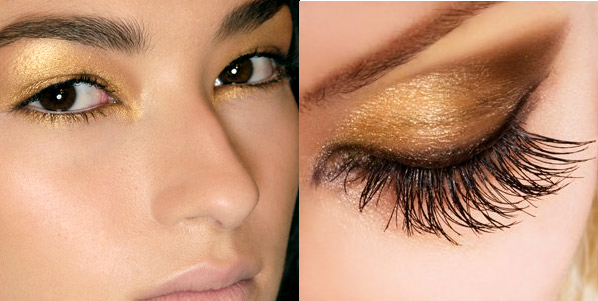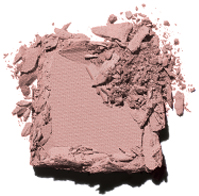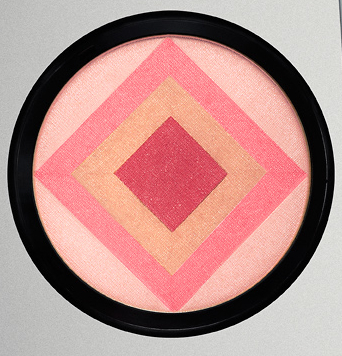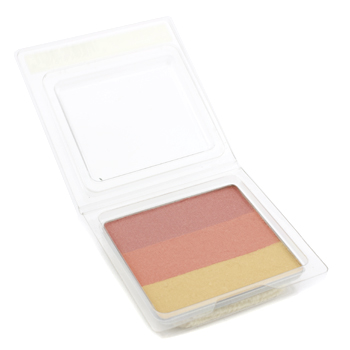
Nothing is accidental in the world of cosmetics sales. From the advertising to the displays to the hype to the “studies” to gifts to the free makeovers, everything is designed to encourage consumers to shop. This, in and of itself, is not a bad thing but it is important to understand there is a real science used to encourage consumers to part with their money. If you have ever felt you are running the gauntlet to get through a department store cosmetics department then this article is for you.
First, let me state – I don’t like the hypothesis that companies are trying to “trick” the consumer into buying products. I happen to think consumers are much more savvy than that. However, the system is often organized to apply great pressure to buy products and it often doesn’t feel like pressure. More like a slow boil where the consumer doesn’t even realize they are being brought to the cash register in a very specific manner.
Second, I never blame the sales people – the job is very high stress and high pressure. Often a cosmetic’s sales person who cannot meet their monthly goal will be let go and replaced even if they miss said goal by even a few dollars.
Third – most consumers are ok to buy one or two over priced cosmetics, because, well let’s face it, it’s fun to do. What is important is to note how that fun can turn into something akin to thumbscrews being applied.
Here are a few of the very subtle techniques employed to help consumers keep shopping:
1. Pseudoscience: White lab coats worn by sales people, the word dermatologist printed everywhere, cited clinical studies, stories of decades of research, the famous “our experts” phrase...these are all marketing ploys to imply a level of scientific authority that does not really exist. Notice this technique next time by how many times you see a “prescription” pad in a cosmetics department, the term “Rx” used or even how many times you see the word “doctor” associated with a product. To be clear, over the counter products have little to no research done aside from some basic irritation testing or stability testing.
2. Disparage and praise: The key is to get consumers to buy the products being pushed. One of the simplest ways to do this is to show how the products they are currently using are inadequate for their needs while gently reminding them that they made the best choice they could with their limited knowledge. This does two things–creates doubt and increases credibility. Notice this technique the next time you are shopping–the sales person lays out all the products you “need” and then pulls one two out of the pile saying “the product you have at home right now will work just fine so don’t worry about these.” These are usually the products they don’t need to push anyway and the ones you end up “needing” are on their push list.
3. Expensive means better: If you think this is nota techniques consider this–the average price point for a day cream in now over $100. The cosmetics companies have done a great job of convincing the consumer that only high priced items are of the best quality. This completely untrue, yet exotic ingredients in exquisite packages are constantly sold with high price tags. Notice this technique by seeing how many over $100 products contain some type of “rare” extract, or ingredient that “influences” cell behavior, or even associated with something “precious” (gold and diamonds are the new ones used in cosmetics). There is no evidence showing a higher priced cosmetics can work better than a less expensive one. And don’t think inexpensive is just as good. There are good and bad products at every price point, made by every brand and sold in every retail channel.

This season makeup takes its rightful place in the pantheon of embellishment that defines an outfit, creates fashion and signifies style. With bold, bright and intense colours that shock and demand attention. A conundrum of texture that transfixes the gaze while enhancing the individual wearer: this is the very essence of Spring 2013
The trend is light capturing elegance that inspires admiration!
Create the look:
EYES: The most important part of the look is metallic eye shadow. Often people are afraid of metallic and shimmer eye shadow but when used correctly they can capture light and even reflect the soft texture of the skin. The trick is to blend and overlay with deep rich matte tomes and highlight with the metallic finish.
Step 1: Prep the eye with a base. Concealers don't work well for this but highlighting primers will create an even and slightly illuminated surface on which to apply the make up. Ensure the entire eyelid is covered with the primer before any eye shadow is applied.
Step 2: Fill the entire eyelid with the metallic shade. Lash to brow. The trick here is to ensure the metallic is a light shade so it can reflect rather than sparkle on the lid.
Step 3: On the mobile lid overlay a deeper (but not data) matte shadow that mitigates any one-dimensional quality of the metallic eye shadow. This will create depth without making the eye lose the luminosity desired. This seasons copper and rose work well together.

CHEEKS: Soft radiance, not contour. The key to cheeks for Spring 2013 is to keep them looking as natural as possible. With the brightness of the metallic eye shadow and the pop of coral on the lips cheeks should be very subdued.
Step 1: Use a multi prismatic blush rather than a monochromatic one. Multiple colours blended together work better to create a natural finish.
Step 2: Apply directly to the apple of cheeks in a circular motion. This gives the illusion of skin that has been out doors rather than made up with make up.
Step 3: Blend carefully all the way to the hairline, alone the cheek bone. This connects the colour and elaborates on the naturalness of the look.

LIPS: Coral, coral, coral. Don't be afraid. Coral doesn't mean orange. True coral is a blend of pink and orange creating a bright pop of needed colour. The lips are the focal point of the entire look. Don’t shy away from the boldness coral can create.
Step 1: Apply the lipstick to the centre of the bottom lip gently blending to the outer edges. Be careful to stay in the natural lip line.
Step 2: Press the lips together, transferring the colour to the top lip.
Step 3: Carefully shape the lipstick to fill but not over exaggerate the lip. Finish with a matching lip liner to ensure the edges are smooth.

This look is fresh, radiant and clean. It is completely "spring" without being so trendy it will be boring in a few weeks.
Designer: Primer: Daniel Thompson Beauty Absolute Light ($61), Eye shadow: Daniel Thompson Beauty Mineral Eye shadow in Polished Copper and Roselle ($33)
Spa: Primer: Youngblood Mineral Cosmetics Eye Illuminating Duo ($26), Eye shadow: Ink Cosmetics Eye Dust in Ambition ($20) and Matte Shadow in Desert Pink ($18)
Mass: Primer: Smashbox Photo Finish Lid Primer ($22), Eye shadow: Revlon PhotoReady Shadow in Bohemian ($10)







Designer: Blush: Daniel Thompson Beauty Mineral Blush ($89)
Spa: Blush: Aveda Petal Essence Face Accents in Rose Blossom ($29)
Mass: Blush: Gosh Cosmetics Multicolour Blush in Pink Pie ($19)



Designer: Lipstick: Daniel Thompson Beauty The Transforming Lipstick in Pink Coral ($33)
Spa: Lipstick: Jane Iredale Mineral Make Up PureMoist Lipstick in CJ ($22.50)
Mass: Lipstick: Rimmel London Kate Moss Lipstick #16 ($8)


